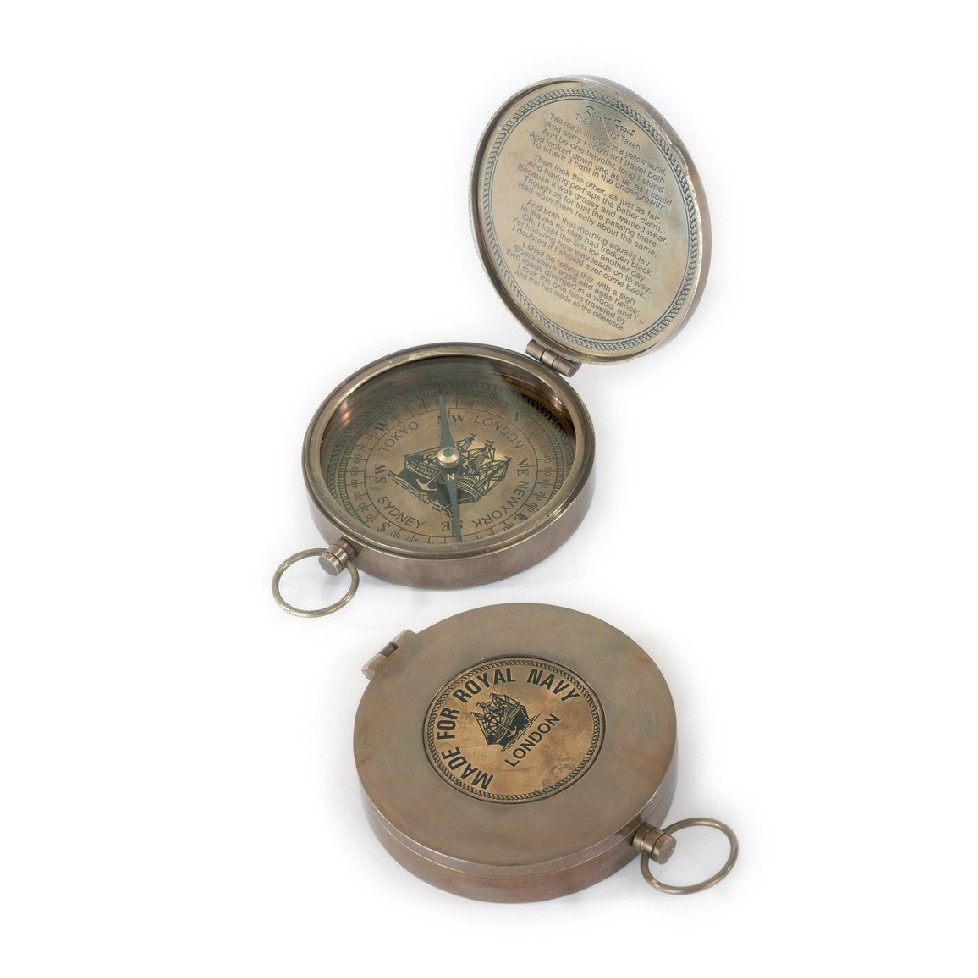

| Los pedidos realizados el día 25 de Julio, se procesarán el día 26 por fiesta local. |


Antiqued brass compass.
The compass (from the Latin "passus" ("step")) opened up the world to exploration and discovery. The principle of the magnetic needle was already known to the Chinese in the 3rd century BC and was first used by feng shui priests to tell them where and how to build. It was adapted to maritime navigation by Chinese sailors around the year 1000. The first compasses comprised a magnetic needle floating in a bowl of water, with the needle suspended on a thread or threaded through a reed. The Arabs perfected this by mounting the needle on a pivot. The compass arrived in Europe between the 10th and 11th centuries, enabling sailers to cross the oceans and explorers to discover the continents. The first instrument to resemble the modern compass is attributed to Portuguese citizen .
Brújula en latón envejecido con una cajita de madera de palisandro decorada de un placa en latón.
This elegant IMEX barometer analyses pressure variations allowing it to predict the weather.
Reproduction of a compass-sundial in aged brass of the type that Christopher Columbus would have used.
This elegant IMEX Marine barometer analyses pressure variations allowing it to predict the weather. Made of brass. Made in Spain. Guaranteed 1 year. 14.5x4x14.5 cm.
Antiqued brass compass with lovely compass rose. Comes with navy blue velvet bag.
Decoration ship´s wheel clock in antiqued brass with roman numerals.Delivered without batteries. Battery type : AA - 1;5V